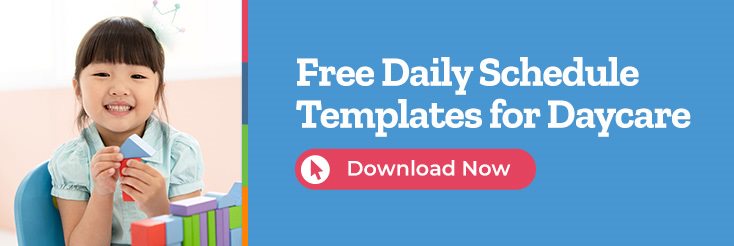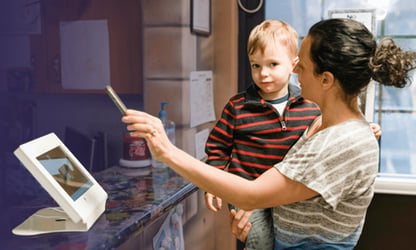Principles of effective teamwork in child care help to promote proactive communication, problem-solving and decision-making skills. Skills such as taking turns, listening skills, teamwork, conflict resolution and leadership are essential elements of every child’s growth.
When team members cooperate, support and respect each other, it helps the child care team achieve common goals. Each member contributes to the workspace, but the whole group is responsible for its success. Understanding each other’s roles and responsibilities enhances your ability to communicate effectively. In Dora the Explorer, Dora always asks for help from her friend Boots, and together they work as a team.
Each child care team is unique, with its own members, meeting time and culture. Regardless of your team’s size, setting or methods of communication, there are a few key principles that allow your child care team to run smoothly and reach its goals. Below are 14 key principles of effective teamwork in child care that you could incorporate in your workplace:
Table of Contents
- Teamwork
- Clear and Proactive Communications
- Shared Goals
- Defined Roles
- Mutual Trust
- Measurable Process and Outcomes
- Accountability
- Respect
- Commit to Excellence
- Take Advantage of Communication Technologies
- Encourage Shared Leadership
- Patience
- Flexible and Open Mindset
- Embrace Diversity
- How to Foster Teamwork in Your Child Care Center
- Classroom Management Techniques
- Looking for More Time-Saving Resources?
- FAQS
1. Teamwork
Often, teams in daycare need to work together when appropriate to improve the care, education and relationships with children. In some cases, the team may have individuals with different skills, but all are working toward the same goal of improving the current system or meeting children’s needs. This is why the principles of effective teamwork in the classroom are so crucial to a successful child care program.
Cross-functional work involves a team of individuals — like child care workers, teachers, speech and language therapists, counselors, etc. — with a variety of skills working toward common goals.
Here are a few good teamwork examples for students:
- Willingness to share expertise
- Complement one another
- Rise and fall together (when the success of one depends on the success of all, team members are more likely to do what needs to be done to pull up those around them)
2. Clear and Proactive Communications
Effective communication with parents and teachers is a critical part of your job as an educator. Good communication builds understanding and trust, which leads to successful team collaboration to support children’s well-being and development.
Workplace communication is also essential for the success of a daycare. A clear and effective communication system allows everyone to be on the same page. This helps to enhance productivity because each party (management, coworkers, etc.) remains updated on internal matters. Below are examples of proper communication you should incorporate into your daycare.
- Informing: There are times when you may need to communicate with your colleagues to complete projects on time. To do this effectively, it is vital that you know how to handle your team.
- Instructing: Show your teammates how to do things or give them new ways to complete tasks. Work with others, either in a group for large group activities, or as individuals; share responsibility for tasks and complete them using accepted practices.
- Guiding: Teamwork often entails guiding each other through steps and taking turns shepherding team members.
3. Shared Goals
The team works together to establish goals that are realistic and achievable. These goals reflect the children’s and family members’ priorities and can be clearly articulated, understood and supported by all members. Identifying and building common ground is an essential step in the collaborative process of negotiation. As a professional, identifying your goals is one of the first steps. Make sure to follow these three steps before setting and sharing goals with your staff and parents.
- Mission: Create a mission for your daycare team that you stand behind. The mission will become the sole purpose that drives everything the business does, for example: Our mission is simple: We want to help children flourish in their individualism.
- Strategic goals: Strategic goals are the reason we get up in the morning. They move the company in one direction, and if they’re achieved, they help the business achieve the mission.
- Tactical goals (team and individual): Tactical goals are the specific, immediate results you will achieve. From learning new skills to creating a new daycare service and making a sale, your tactical goals will help your child care team be successful.
For more ways to promote learning in your child care center, take a look at these exciting transition activities.
4. Defined Roles
Although the question may seem straightforward, you are probably aware that defining roles and responsibilities in a child care environment is not always easy. Defined roles are important principles of effective teamwork in child care. It’s vital to define a person’s role in the business and make sure that each one fulfills their specific obligations. It is a serious matter with serious consequences if not handled correctly, especially when managing children. Strategic planning is crucial before making any decisions that will affect the company as a whole. To avoid confusion, ensure that each team member knows what their role entails and what is expected of them.
5. Mutual Trust
Trust in the workplace promotes an atmosphere of security and respect among employees. Rewarded with a feeling of attachment, they come to regard the organization as their home. This improves communication between both the employer and the employee, creating a competitive advantage. If you want honest feedback and ideas, trust is the foundation that underpins an effective child care program. It allows an open, positive environment where people feel comfortable expressing themselves and demonstrating active listening to and from other team members.
6. Measurable Process and Outcomes
It’s important that your child care team works together to make sure they always learn and improve. Use any feedback you’re given and share any successes and failures. This can be a useful way to grow from possible mistakes or build on what’s working to allow you to provide the best possible care for children.
7. Accountability
Early educators have taken center stage, and that is a good thing. More than ever before, people are recognizing how important early education and child development are to all of us. However, it is easy for early educators to feel that the spotlight is too hot. One of the principles of effective teamwork in child care is being accountable for creating environments and facilitating learning opportunities that support child development and learning in daily schedules. Not only is being accountable important in the child care realm, but it is equally important in any workplace environment. Here are ways to be more accountable:
- Participating: Participate in discussions, tasks or team-building activities.
- Monitoring: It’s important for the whole team to contribute to an ongoing review process. As part of this, you should check that the children’s care meets your group’s goals. Team members will feel more creative and motivated if they feel their voices are being heard.
- Motivating: The group depends on the abilities of each team member, so work hard to create a supportive and positive environment and motivate each other to do their best. This will, in turn, help your staff motivate the children.
- Committing: Working together as a team helps you achieve your goals and provide the best child care possible.
8. Respect
Child care teachers’ words and actions can have a big impact on children. Infants and toddlers are looking for positive role models. As a teacher, you want to make sure that your body language is respectful when you are dealing with troublesome behavior from children. Also, allowing your employees to display disrespectful or degrading behaviors will result in a poor workplace culture and will likely increase employee turnover. Examples of how to show respect in a daycare to children and staff include:
- Listening: It’s simple. Effective active listening skills are essential to establishing a professional work environment and effective teams.
- Empathizing: Team members must show open minds and genuine interest in the views of others. They should never be hostile toward the ideas of others, and they should always be respectful of the knowledge acquired by fellow teammates.
- Reflecting: When you value individuals on the team, alignment with company goals happens naturally. It’s as easy as listening and adding your own take on what was said.
9. Commit to Excellence
Keeping kids safe and healthy is important in a high-quality child care center. In addition, keeping children safe and healthy helps children develop skills they need for success in school and in their lives. It’s important that all staff are always committed to excellence and holding a high standard in the workplace.
10. Take Advantage of Communication Technologies
Communicating with parents is one of the most important aspects in an educational environment. By using collaboration technology, you can create a more effective and productive interpersonal relationship between parents and teachers. In this electronic era, adopting technology to better communicate has joined the list of principles of effective teamwork in child care.
11. Encourage Shared Leadership
Shared leadership involves maximizing each individual's talent in your organization by empowering individuals and giving them an opportunity to take leadership roles in their areas of expertise. Shared and effective leadership builds an inclusive environment of trust and respect for each member. When teams define their goals, responsibilities and tactics, they are motivated to succeed. Incorporating leadership and collaboration in the child care setting allows a team to share a sense of purpose and responsibility to ensure the learning and well-being of children is always the key purpose.
12. Patience
Incorporating patience in a child care setting is crucial. Losing your temper repeatedly, whether at a child or in reaction to minor troubles, can be a pitfall that children learn to emulate. Having patience in child care is one of the essential principles of effective teamwork in child care.
13. Flexible and Open Mindset
Agreeing on a common goal is essential. But in terms of children, it shouldn’t be at the cost of suppressing alternative ideas and opinions. Having differing opinions leads to having more ideas, making our child care teams more ambitious and inclusive; a diverse team is its competitive advantage.
14. Embrace Diversity
Diversity is important in all workplaces, but especially in daycares. By understanding diversity, children will be able to form positive relationships, especially with other people who do things differently than themselves and their family. Children’s natural curiosity needs to be nurtured and extended to include their friends in the setting. That’s why it’s important to consider diversity in a child care setting.
Diversity is a simple fact of life. Our everyday experiences are shaped by the people we meet and the communities that produce us. Diversity offers a range of benefits in every setting. For our kids, these benefits are more distinct. Here are a few reasons why diversity is an essential element in child care:
- Increased creativity and innovation: Students are surrounded by people with diverse knowledge, skills and expertise whom they can call on in different situations.
- Nurturing empathy: When students are exposed to diversity, they may overcome the empathy gap that develops between young children and teenagers.
- Preparation for future diverse settings in adulthood: Students are likely to have many different experiences with people. They will be exposed to a wide variety of people, different types of work environments and a variety of cultures as they go forward.
How to Foster Teamwork in Your Child Care Center
Collaborative Lesson Planning
Research on collaborative preschool lesson planning has shown several benefits and important considerations:
- Positive impact on teaching practices: Collaborative lesson planning can serve as a positive "dissonance" to teachers' individual planning practices, helping to improve and refine their approaches.
- Fosters teamwork and social skills: Collaborative activities for preschoolers, such as group art projects or parachute games, teach important teamwork, communication and problem-solving skills. While not directly about lesson planning, these activities highlight the core value of collaboration in early childhood education.
- Whole-child approach: Collaborative preschool partnerships enable a more holistic approach to early childhood education, addressing social, emotional and cognitive aspects of development. This suggests that collaborative planning can help create more comprehensive lesson plans.
- Increases access and quality: Collaborative partnerships between school districts and local preschool providers have been shown to increase access to quality programming for children from low-income families and those with disabilities.
- Professional development: Collaborative planning often involves increased consultation, intervention services and professional development opportunities for teachers. This can lead to improved lesson quality and teaching practices with children.
- Challenges in implementation: While beneficial, sustaining collaborative partnerships can be challenging. Issues such as building trust, maintaining relationships and aligning goals across different stakeholders need to be addressed.
- Technology-supported input: Some research has explored the use of collaborative learning spaces and technology to support lesson planning and implementation in early childhood education settings.
- Curriculum focus: Collaborative lesson planning in preschool often aims to foster creativity, critical thinking and collaborative skills essential for 21st-century learning.
Overall, research suggests that collaborative preschool lesson planning can lead to more comprehensive, high-quality educational experiences for young children, while also supporting teacher development and fostering important partnerships within the early childhood education community.
Joint Parent-Teacher Meetings
Research on joint parent-teacher meetings has revealed several important findings:
- Positive impact on student outcomes: Experiments have shown that regularly scheduled face-to-face meetings between teachers and parents over two academic years leads to improved and positive outcomes for students.
- Building partnerships: Parent-teacher conferences are essential for establishing relationships between schools and families. These meetings can set a positive tone for the school year and create ongoing conversations about children's progress.
- Sharing comprehensive data: Effective conferences focus on sharing both student and classroom data, deepening the conversation on the child's progress.
- Flexibility and accessibility: To reach out to all families, schools should offer flexible scheduling options, interpreters, child care or transportation when needed. Teachers can also be available by phone or video conference when in-person meetings are not possible.
- Ongoing communication: Research suggests that the traditional yearly parent-teacher conference is necessary but insufficient. True family engagement requires regular two-way communication to ensure students are on track.
- Focus on growth: Effective conferences emphasize student growth rather than just grades. This approach helps create a more collaborative and constructive dialogue between parents and teachers.
By implementing these research-based strategies, schools can make parent-teacher conferences more meaningful, productive and supportive of student learning and development.
Co-Teaching Strategies
Six main co-teaching strategies have been identified:
- One Teach, One Observe: One teacher leads instruction while the other gathers specific observational data on students or the teaching process.
- One Teach, One Assist: One teacher leads instruction while the other assists students, monitors behavior, or provides support.
- Station Teaching: Teachers divide content and students into groups, with students rotating through stations.
- Parallel Teaching: The class is split in half, with each teacher instructing one group on the same material, reducing the student-teacher ratio.
- Alternative (Differentiated) Teaching: One teacher works with a small group for specific purposes while the other manages the larger group.
- Team Teaching: Both teachers actively instruct the class together, sharing responsibilities equally.
Peer Observations and Feedback
Peer observations and feedback are valuable tools to help teachers and staff grow and develop in a daycare setting. They provide numerous benefits for both the person being observed and the one doing the observation:
- Helps improve teaching practices and pedagogy
- Allows teachers to learn new strategies and techniques from colleagues
- Provides opportunities for professional growth and reflection
- Strengthens relationships between staff members
- Gives teachers insights into how their students behave in other contexts
Team-Building Activities for Staff
Here are 10 fun, helpful team-building activities for daycare staff that will help team members get to know each other better while also promoting skills that will empower them to be more effective in their roles and in helping kids learn and grow:
- Fact Bingo: Create a bingo card with interesting facts about staff members. Employees try to match facts to colleagues, encouraging conversations and helping staff get to know each other better.
- All About Me Poster: Have each teacher create a poster with information about themselves, including education, fun facts, favorites and family details. This helps staff and families learn more about each other.
- Human Taco: A fun, nonverbal activity where staff members have food item pictures taped to their backs and must line up in the correct order to form a "taco" without speaking.
- Secret Coworkers: Implement a "secret friend" activity where staff members anonymously give small gifts or encouragement cards to an assigned colleague over a set period.
- Cooperation Games: Use physical activities like three-legged races or back-to-back races to promote teamwork and communication.
- Staff Bulletin Board: Create a bulletin board with staff photos, short essays and positive experiences and feedback from parents to celebrate achievements and build community.
- Seeing Spots: Place colored stickers on staff foreheads and have them find their matching color group without speaking, encouraging nonverbal communication.
- Common Thread: Divide staff into small groups and have them find something they all have in common, then create a flag representing that shared trait.
- Fingertip Hula-Hoop: Have the group work together to lower a hula hoop to the ground using only their fingertips, promoting cooperation and problem-solving.
- Caterpillar: A team game using hula hoops where groups must work together to move forward and collect objects, encouraging coordination and strategy.
Classroom Management Techniques
Effective classroom management is a core part of a successful learning environment in a daycare center. Staff can facilitate learning and manage the classroom well when they:
- Establish clear routines and expectations
- Use positive reinforcement
- Create an organized physical environment
- Implement engagement strategies
- Practice effective behavior management
- Foster student involvement
- Adapt to individual needs
- Maintain strong communication
- Create a positive learning environment
- Use technology and resources
By implementing these techniques, teachers can create a well-managed classroom that supports learning, positive behavior and social-emotional development.
Implementing Technology in Classrooms
Technology can have a positive impact in preschool classrooms, but when using it to help students learn, remember to balance technology with plenty of physical activity, outdoor play and hands-on learning experiences. The overall goal is to use technology intentionally to enhance children's learning and development, not to be the focus of their day in daycare.
- Use technology to enhance learning, not replace traditional methods, and limit screen time to no more than one hour per day.
- Choose age-appropriate educational apps and software that encourage problem-solving, creativity and critical thinking.
- Incorporate various types of technology, including tablets, laptop computers and interactive whiteboards for group activities and lessons.
- Develop technological literacy and ICT capability, teaching children to view technology as tools for specific purposes.
- Encourage creativity and digital play, such as using drawing and painting programs to foster creative expression, and allow children to create digital stories using images, audio and video.
- Use technology for personalized learning, allowing you to tailor lessons to individual needs and abilities using educational apps and track progress and adjust instruction using digital tools.
- Integrate technology into your classroom routines on a daily basis, such as using digital tools for attendance, lunch selections, or morning check-ins and sharing photos, videos and daily activity reports with parents using child care management apps.
- Promote collaboration and communication through the use of technology for group activities and shared learning experiences.
- Ensure equal access by using internet hotspots to provide access for students without home internet and rotating technology use to ensure all children have opportunities to engage.
- Provide teacher training and support.
Regular Team Meetings
To effectively lead a daycare team and keep everyone on the same page, it’s important to hold meetings at least once a month, set clear expectations and share agendas in advance. In these meetings, be sure to encourage active participation from all staff members and include team-building activities and recognition. Also, end meetings on a positive note to boost morale and send team members back to their jobs with energy and encouragement.
Professional Development Opportunities
Daycare staff, like the children they care for, should be continually growing and learning. Those who own and manage daycare centers need to keep staff development in focus and have specific plans and steps in place to help staff members build their careers and knowledge. These aims can be accomplished through professional development opportunities such as:
- Conferences and workshops
- Continuing education courses
- In-house training
- Mentorship programs
- Professional learning communities
- Online learning
- Observation and feedback
- Professional memberships
Clear Communication Channels
Communication matters in a daycare setting just as it does in any workplace or educational setting. It’s key for staff, parents and students alike and as you seek to establish and maintain clear communication at your center, focus on:
- Emphasizing open two-way communication
- Using technology
- Creating handbooks and newsletters
- Encouraging open dialogue
- Collaborating on solutions
- Maintaining consistency
If you can clearly focus on these concepts and involve parents, students and staff in the process, your center will have a huge head start on the clear communication it needs to succeed.
Celebrating Team Successes
When a group or team succeeds, its members enjoy being recognized and appreciated. After all, they go through ups and downs, deal with challenges and work together to find solutions to move their projects and students forward. So when your staff — or any group or team within the staff — succeed in a situation, take time to celebrate their accomplishments. It could be a big celebration or a more low-key one depending on the situation, but staff morale improves when team members know their hard work is appreciated.
Looking for More Time-Saving Resources?
Planning, building and designing a daycare daily schedule takes time, which you and your staff are short on. Avoid the stress of starting from scratch. Check out these daycare schedule templates our team built to simplify the task for you. These schedules are printable and easily editable PDFs you can share with parents looking for greater insights on what their child’s day at your center looks like.
FAQs
What are the key principles of effective teamwork in child care?
Research from the American Academy of Pediatrics shows that team-based care for children is based on three key principles:
- Early environment and experiences have crucial effects on lifelong health.
- Resources targeted toward health promotion and disease prevention have significant societal benefits.
- Pediatrics fundamentally incorporates the dynamic nature of childhood.
This teamwork is rooted in communication, cooperation and a focus on putting the health, growth and well-being of the child as a top priority for child care providers and staff.
How can clear communication impact teamwork in the classroom?
Clear communication is essential for effective teamwork in the classroom. Here are some key ways it can positively impact collaboration:
-
Establishes shared understanding: When teachers communicate expectations, goals and procedures clearly, it ensures everyone is on the same page.
-
Reduces confusion and conflict: Unclear communication can lead to misunderstandings, frustration and conflict within student teams. By communicating expectations and guidelines clearly up front, teachers can preempt many potential issues.
-
Facilitates coordination: Clear communication allows students to coordinate their efforts and divide tasks efficiently when working in teams. Knowing who is responsible for what and how the pieces fit together enables smooth collaboration.
-
Builds trust: When teachers communicate transparently and consistently, it helps build trust between themselves and students.
-
Enables feedback and support: Clear communication channels allow students to give and receive feedback to improve their teamwork. It also enables them to ask for help and support from teammates and the teacher when needed.
-
Promotes accountability: When roles, responsibilities and standards are explicit, it's easier for students and staff to hold each other accountable.
-
Encourages participation: When communication is clear and open, students are more likely to actively participate in team discussions and activities. Unclear expectations can inhibit participation.
What are some strategies for setting and achieving shared goals in a child care setting?
Here are some key strategies for setting and achieving shared goals in a child care setting:
- Collaborate on goals: Involve all staff members in the goal-setting process to build buy-in and ownership.
- Communicate goals clearly: Clearly articulate the center's mission, vision and overarching goals that define your core values and your cultural values.
- Create action plans: Break down larger goals into specific, actionable steps with assigned responsibilities.
- Foster accountability: Regularly review progress toward goals and celebrate successes.
- Align incentives and recognition: Link staff performance reviews and rewards to goal achievement.
- Encourage continuous improvement: Regularly solicit feedback from staff and families to refine goals and strategies.
Why is defining roles important for teamwork in child care?
Defining roles is an important principle of effective teamwork in child care for several key reasons:
- Clarity of responsibilities: When each team member clearly understands their specific roles and obligations, it prevents confusion and ensures everyone fulfills their duties. This is especially critical when managing children's care and education.
- Accountability: Defined roles create a sense of ownership and accountability. Team members know what they are responsible for and can be held accountable for their contributions. This promotes a positive team culture of responsibility.
- Efficient collaboration: With clear roles, the team can collaborate more efficiently by focusing on their areas of responsibility and expertise. They can rely on each other to handle their assigned tasks.
- Conflict prevention: Undefined or overlapping roles can lead to conflicts, power struggles and resentment on the team. Clearly delineated roles help prevent these issues.
- Shared understanding: When roles are defined, the entire team has a shared understanding of how responsibilities are divided. This creates alignment around goals and strategies.
How does mutual trust contribute to a positive team environment?
Mutual trust is a critical component of a positive team environment in child care settings. Here are some key ways trust contributes to effective teamwork:
- Promotes open communication: When there is a foundation of trust, team members feel comfortable openly sharing ideas, concerns and feedback. They know their voices will be heard and respected. Open communication is essential for addressing challenges and continuously improving.
- Enables collaboration: Trusting relationships allow team members to collaborate effectively. They can rely on each other to fulfill responsibilities, provide support and work together toward common goals. Collaboration breaks down when trust is lacking.
- Reduces conflicts: In a trusting environment, team members give each other the benefit of the doubt. They are less likely to jump to negative conclusions or engage in conflicts. If issues arise, trust enables open dialogue to resolve them constructively.
- Fosters accountability: Team members are more likely to be accountable to each other and the team's goals when there is mutual trust. They don't want to let their colleagues down. Trust creates an environment where people take ownership of their roles.
- Supports risk-taking: In a high-trust team, members feel safe to take risks, innovate and learn from mistakes. They know they have the support of their colleagues. This psychological safety is key for growth and continuous improvement.
- Enhances job satisfaction: When trust is present, team members feel valued, respected and supported. This leads to higher job satisfaction and morale. People enjoy coming to work and working together. Low trust has the opposite effect.
What methods can be used to measure processes and outcomes in child care teamwork?
When promoting teamwork and cooperation in a child care setting, measuring progress and evaluating the outcomes of your efforts is essential. It allows you to see whether your strategies and tactics are working, what adjustments are needed and how you can stay on track toward achieving your goals. Methods for measuring progress include:
- Measure shared goal setting: Assess the degree to which child care teams collaboratively set specific, measurable and achievable goals for children's learning and development.
- Track progress towards goals: Monitor the team's progress in achieving the established goals through regular check-ins and data collection.
- Evaluate team processes: Observe and assess the quality of communication, collaboration and decision-making within the child care team.
- Measure team cohesion and trust: Assess the level of mutual trust, respect and support among team members.
- Analyze outcomes for children and families: Track changes in children's developmental progress, learning outcomes and overall well-being.
- Evaluate the cost-effectiveness of teamwork: Analyze the resources (time, money, staff) invested in the team-based approach.
By using a combination of these methods, child care teams can continuously evaluate their processes, measure their progress and demonstrate the cultural value of their collaborative efforts in supporting children's development and family engagement.













